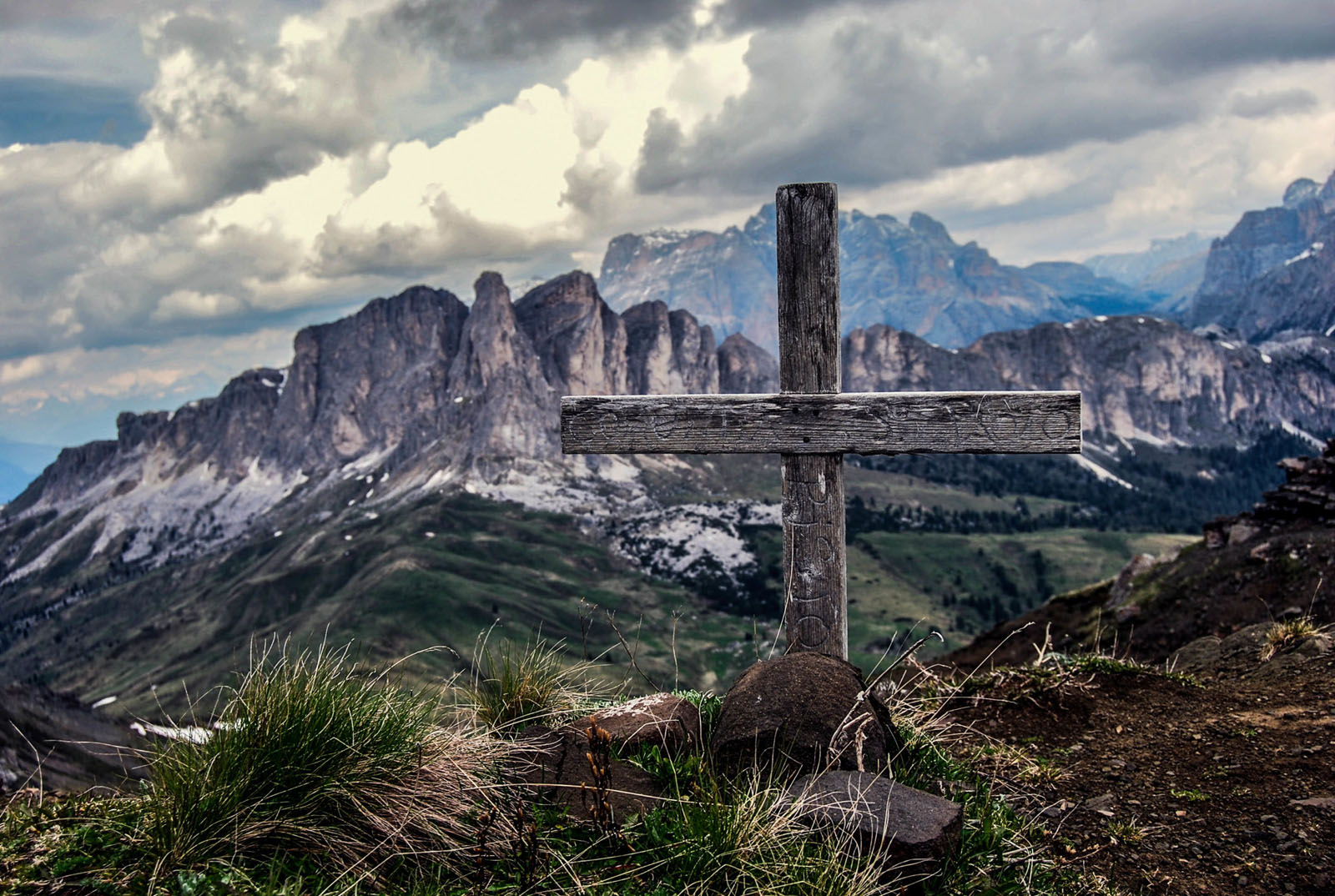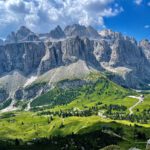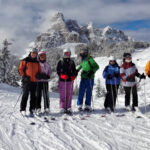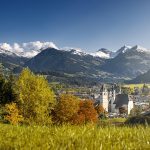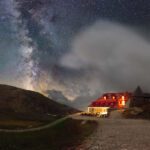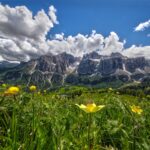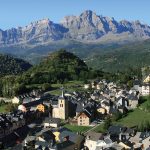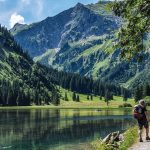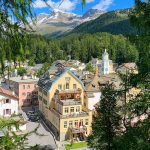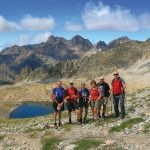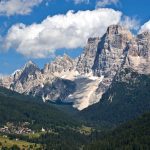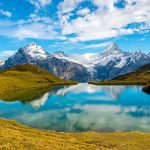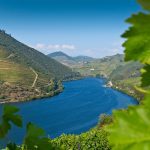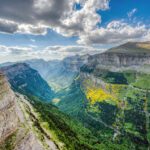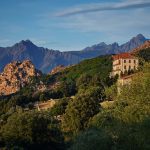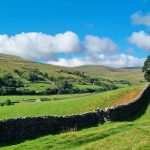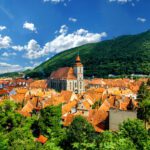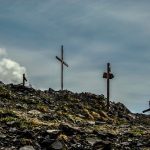
Step back in time during a World War One walk in the Dolomites
Discover historical trails, breathtaking landscapes, and the echoes of the past during a World War One Walk in the Dolomites. From fortifications to trenches and tunnels, there are plenty of historic clues and sights to discover if you know where to look. There are many hidden gems amongst the valleys, peaks and higher passes of the Dolomites. At the Valparola Pass long hairpin bends knit together winding roads that climb high above the towns and villages with ever improving views and once at the top the horizon spills out towards the Marmolada, the Dolomites’ highest peak. It is the destination of choice for many cyclists looking to test their legs, flower enthusiasts in search of picturesque rock gardens and historians with in interest in the Dolomites’ Word War One involvement.



Italy in World War One
Italy joined the war in 1915 when the South Tyrol was promised to them by the allies. The Italians were hoping to regain territories that had once been theirs in times of the Roman Empire and the South Tyrol (which had since become part of Austria-Hungary) was sitting right on their border making it an obvious target. The allies recognised that an attack from the Italians in the South would help to stretch Austrian forces that were already fighting on other borders. It was very much a tactical decision on the behalf of the Allies.
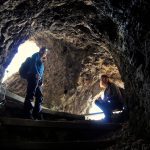
How the World War One Shaped The Dolomites
What would have been a relatively straight forward success if the Italians had moved in straight away became a long war of attrition as they were slow to attack and the Austrians had time to dig themselves into trenches and tunnels. Lasting around two years little land was gained or lost and many lives were taken in the cold of winter. Collapsing ice and avalanche were just as much a problem as the enemy side. Tunnels were dug deep into the heart of the Dolomites rocks and glaciers and via ferrata routes were constructed to help transport ammunition and supplies up the unforgiving mountain faces. Bombing reshaped the peaks and hillsides and those scars are still visible now.

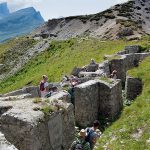

Valparola: Discover World War One battlements and fortifications
Valparola is a great start point if you are in search of battlements and fortifications as it is home to a museum housed in an authentic fort, views of Lagazuoi cable car which summits what was the head of the Austrian front and neighbours the Falzarego pass – one of the sites of the fiercest fighting. There is convenient (and free) parking next to the museum, overlooking Valparola Lake. The museum itself is worth a visit with a wealth of artefacts on show and an accompanying open air exhibit on the slopes below where there are preserved fortifications. It’s also worth keeping an eye on the surrounding rock faces where little windows in the walls give a clue to the tunnels within –these are also well worth an explore although head torches and helmets are recommended.
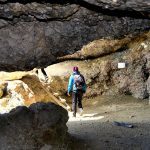
Explore the Lagazuoi Tunnels
If it’s the tunnels that you’re most interested in then Lagazuoi is the place to visit. Just a further five minute drive from the top of Valparola is the Lagazuoi carpark where the impressive cable car sweeps high off the ground up to the top of the mountains sheer face. The lift runs regularly and is the quick and easy way to reach expansive views, a great refugio and the Hidden Valley (also a popular ski route in winter). The mountain can be climbed another way however, inside a network of tunnels dug out by the Italians and Austrians. Long, steep passages intertwine inside Lagazuoi, every so often breaking through the walls letting in the light and increasingly beautiful views. Caverns are littered with debris and wooden frames, machine gun posts and patches of snow in the early season. They are cold inside even in midsummer which can only hint at how cold it must’ve been for the men in midwinter. The tunnels can be walked in either direction, up and/or down. Personally I preferred walking up and enjoying the lift down –less chance of bumping heads on the low ceilings.

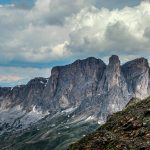

Collett’s World War One Walks in the Dolomites
During our flexible, centre-based holidays in the Dolomites, you have plenty of time to explore the fascinating history of the region. Ask our local Walk Team for more information an historical context of your route
The Col di Lana & Setsass Round Walk
The Col di Lana & Setsass round walk is a popular World War One walks in the Dolomites. It begins above Valparola lake, descending past abandoned fortifications to join a long undulating path below the face of Setsass. With steep cliffs above on your right and views of Col di Lana to your left this is a great place to spot marmots and you’ll almost certainly hear their high-pitched squeaks nearby. The path leads to the far end of the cliffs and splits.
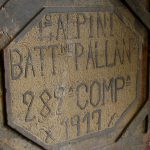
The left hand path branches towards the spine of Col di Lana and sinks into shoulder-height trenches that climb to a series of summits joined together by more tunnels and a ridge bearing the scars of an enormous explosion that removed part of the mountain during World War One. The right-hand path continues to skirt around Setsass and eventually reveals views of the Alta Badia with the Sella Massif and Puez Odle peaks striking out a recognisable skyline. The slopes and cliffs of Setsass are home to many rock garden flowers, more marmots and chamois. Watch out for rock fall from above as the Chamois are known to scale the near vertical face and can dislodge stones.

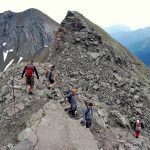

As the cliffs shrink down the back of the mountain comes into view and is in contrast a sweeping slope plated with limestone pavement. It is crowned by seven peaks, which is how it finds its name and a further 45 minute walk will take you to the top of the highest, middle peak. Once reached it is necessary to retrace your steps, off of the ridge so that the circular route can be re-joined. Here the path makes its way through forest, miniature limestone canyons and more fortifications before meeting the lake once again.
Head on a Walking Holidays to the Italian Dolomites
The Italian Dolomites are an area rich in wildlife as well as history and serve as an example of how nature can reclaim a scarred landscape. That said the signs of mountain fighting are still clear to see and serve as a plain reminder of a world at war. A visit to the Valparola and Falzarego passes come highly recommended when exploring the Italian Dolomites with Collett’s.
Find Out More